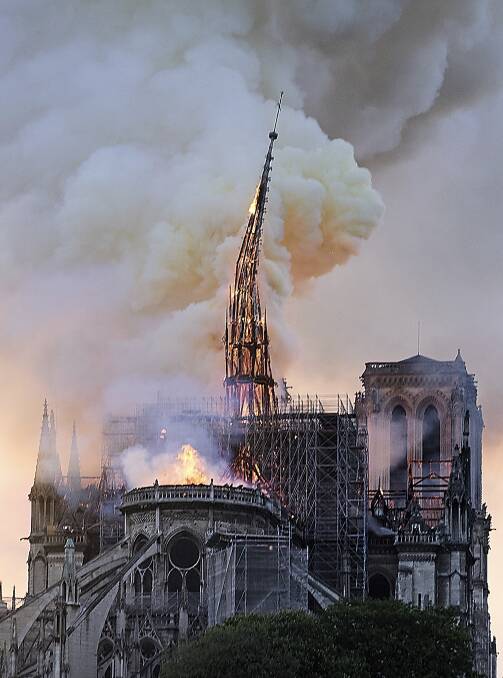It wasn't just a building. For many people in the Australian capital, Notre-Dame de Paris was a part of their lives - and, they say, it will be again.
Subscribe now for unlimited access.
$0/
(min cost $0)
or signup to continue reading
They remember their childhoods, being taken there in awe by their parents.
And, as romantic teenagers, they remember sitting on the hard stones of the banks of the Seine, sipping wine and gazing across at the cathedral's magnificence, mesmerized by its monumental presence.
And then today's brutal reality.

Some stayed up all night watching the fire unfold and some woke to learn of the devastation.
"It is indeed a tragedy," said one of the staff at the French public school, the Lycée Franco-Australien de Canberra. "We spent the night watching the news."
Veronique Danjou, the director of the city's French-Australian Preschool, said she was taken to the cathedral as a child by her parents - all French schoolchildren were.
She made the same pilgrimage with her Australian children when her family visited Paris.
Parents at her ACT school had been coming in through the morning and expressing their shock.
She was pleased to learn that there was an intention to rebuild, but she felt it couldn't be returned to what it was - the wood in the ceiling, for example, had been there for many centuries, worked by the hands of unknown craftsmen.

In so many ways, it was the history of her original country - the emperor Napoleon, for example, was crowned there.
"It can't be replaced. It was unique and it's gone," she said. "It's never going to be the same again."
Others were less pessimistic. Dr Leslie Barnes, who heads the French studies program at the Australian National University, said Paris had endured floods and fires and wars, "but the city has rallied round and built things back up".
"It will be different and that's sad but it will still be there - like the phoenix," she said.
"It's the heart of Paris ... the story of Paris is totally in that building. It is very much the city."
Paris is a low-rise city, with the cathedral at its heart. "From the Left Bank, which was my side of Paris, it dominates the landscape," Dr Barnes said.
"We used to sit on the quai with a glass of wine and just contemplate its size and magnificence. It's very much the city."
She said there was something mystical about the building, particularly its dark interior.
She remembered being shown the wood carvings. The ancient vault of a nave was both cold, as she remembered it, because of the physical chill of the weather, but also warm and welcoming because of its history.
Dr Barnes liked the motto of Paris: "She is tossed by the waves but she does not sink", as a rough translation.
"This destruction is devastating," she said. "But the cathedral stands.
"The heart of Paris continues to beat."

